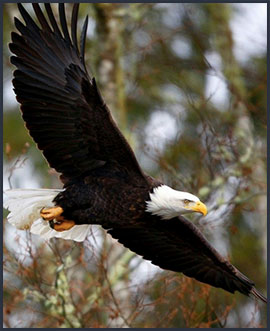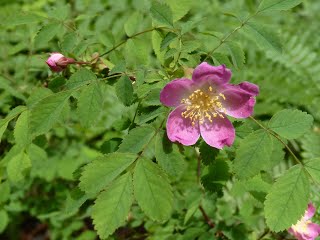BIRDWATCHING IN SUMMER
Just imagine, a large bald eagle flying just above the fog line straight at you as you hold your cup of coffee on the Skagit River on an early fall morning. Just as you think it’s going to come right to you it swoops gracefully off to the left and lands in a nearby cottonwood to gaze at you and look for prey. There are tremendous birding opportunities that arise around every corner.

Bald eagles are among the many different species that can be found in the numerous nooks and crannies that make up our valley. Whether you prefer a guided tour or to find your own piece of heaven on the riverside to watch there are many ways to view our bird habitat. Check out the National Audubon Society's Great Washington Birding Trail map to look for your favorite species.
HISTORY

Dwarf Woodland Rose
The Dwarf Woodland Rose is similar in appearance to the Nootka Rose, however much smaller. The blooms of the Nootka Rose are about 3 inches across whereas the Dwarf Woodland Rose will average 1 inch across. These dainty flowers have bright to pale pink petals which almost fade to white centers and a cluster of golden stamen. This small rose grows on shrubs rarely reaching 4 feet in height, often growing with Western Columbine and Huckleberries. Dwarf Woodland Rose bloom in June and July, and later in higher elevations. In late summer when the plant is fruiting the bright red rose-hips can often be mistaken for Red Huckleberry.
There are two backroad scenic drives where you will see Dwarf Woodland Rose blooming--The Gold Hill Scenic Loop and Cougar Hollow.
March – September



